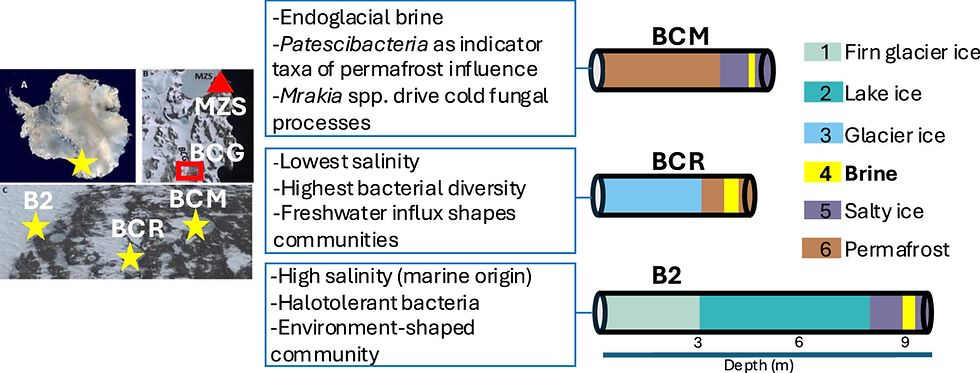Ancient virus may be protecting the human placenta
- David Ojcius
- Oct 29, 2022
- 4 min read
A new study reveals that an endogenous retrovirus (Suppressyn, SUPYN) might help the placenta protect embryos from viral infection.
About 30 million years ago, a virus infected our primate ancestors and one of its genes got trapped in their genomes. Over time, this viral gene became “domesticated”—and territorial. It helped primates fight off other viruses by preventing them from entering cells. The invader—known as Suppressyn (SUPYN)—is still around today, and it’s still helping us out: A new study reveals that this viral turncoat might help the placenta protect embryos from viral infection. “It’s a beautiful story supported by very strong experiments,” says Giulia Pasquesi, an evolutionary biologist at the University of Colorado, Boulder, who was not involved with the work. Finding more such viral genes, she says, might help us harness or boost our inherent antiviral properties without the need to develop new drugs or vaccines. “There are all of these elements we already have in our genome.” Viruses that embed their genetic material in our genome are known as retroviruses. HIV is probably the most famous example; once integrated into our genes, it hijacks our body’s cellular machinery to produce more viruses. If they infect sperm cells or oocytes, the precursors of eggs, their genes become part of our DNA and can be passed on to our offspring. Once a snippet of viral DNA becomes embedded in our genome, it’s known as an endogenous retrovirus (ERV). About 8% of the human genome consists of ERV sequences that have been trapped in our DNA ever since they infected a human ancestor millions of years ago. These genes have lost their original viral function over time, but that doesn’t mean they’re useless. To find out which ERVs may still be active in the human body, molecular biologist Cedric Feschotte of Cornell University and his colleagues scanned the human genome for ERV sequences they suspected might encode proteins. They found 1507 of these sequences, about half of which seemed to be doing something in human tissues. One ERV turned up in a human gene known as Suppressyn (SUPYN), which encodes a protein produced in the placenta and in early human embryos. SUPYN binds to a receptor on cell surfaces known as ASCT2—the same receptor that another ERV-derived protein called Syncytin uses to form links between cells. In its former life as a retrovirus, Syncytin could fuse with cell membranes to enter cells; its modern form allows the placenta to form during fetal development by fusing cells together. The evolution of the placenta might not have been possible without it. “You could argue that without retroviruses you wouldn’t have mammals,” says Welkin Johnson, a virologist at Boston College. “It’s almost like life wouldn’t have evolved as it did.” But ASCT2 is also an Achilles’ heel for mammals. Viruses called type D retroviruses use it to bypass cellular defenses to sneak into cells and cause a variety of diseases in many animals, including nonhuman primates. (None, though, are known to infect humans). Feschotte says this could have presented a major challenge to early animals if they didn’t have a way to protect themselves against these retroviruses. Safeguarding the placenta would be particularly important, as retroviruses that infected an embryo early enough in development could get into sperm and egg cells. When Feschotte and his colleagues experimentally infected human placental cells with retroviruses, they found that SUPYN competed against the pathogens by blocking ASCT2 receptors, making it impossible for viruses to enter the cells. The cells seemed to turn SUPYN on when they detected a virus, suggesting that it encodes an antiviral protein, the researchers report today in Science. Johnson notes it is unclear whether SUPYN actually blocks any viruses in people: Although type D retroviruses can infect macaques and other primates, none of them appear to infect humans. The authors “have got the means and the motive; the problem is the opportunity,” he says. “It’s all guilt by association.” Still, Johnson praises the paper. He notes that it’s possible that SUPYN evolved to block a virus that is now extinct, or perhaps it is so good at its job that it prevents enemy viruses from ever gaining a foothold. Pasquesi adds that it’s technically impressive the authors managed to figure out which receptor these retroviruses were using to enter cells. She is currently working on a similar study mapping domesticated ERVs in the human genome and has found about 30 that appear to be important to the human immune system. “It’s amazing how our own body makes all those little antivirals,” she says. Feschotte’s team now plans to work through the dozens of other active retroviruses that they identified. He points out that although Suppressyn is recognized as a functional human gene, 99% of the other active ERVs they found just look like unimportant junk DNA—but looks can be deceiving. “There is this treasure trove of potential proteins,” he says. “There is at least the potential that these treasures have interesting activities for medicine or physiology or development.”
Read more at: https://www.science.org/content/article/ancient-virus-may-be-protecting-human-placenta








Comments